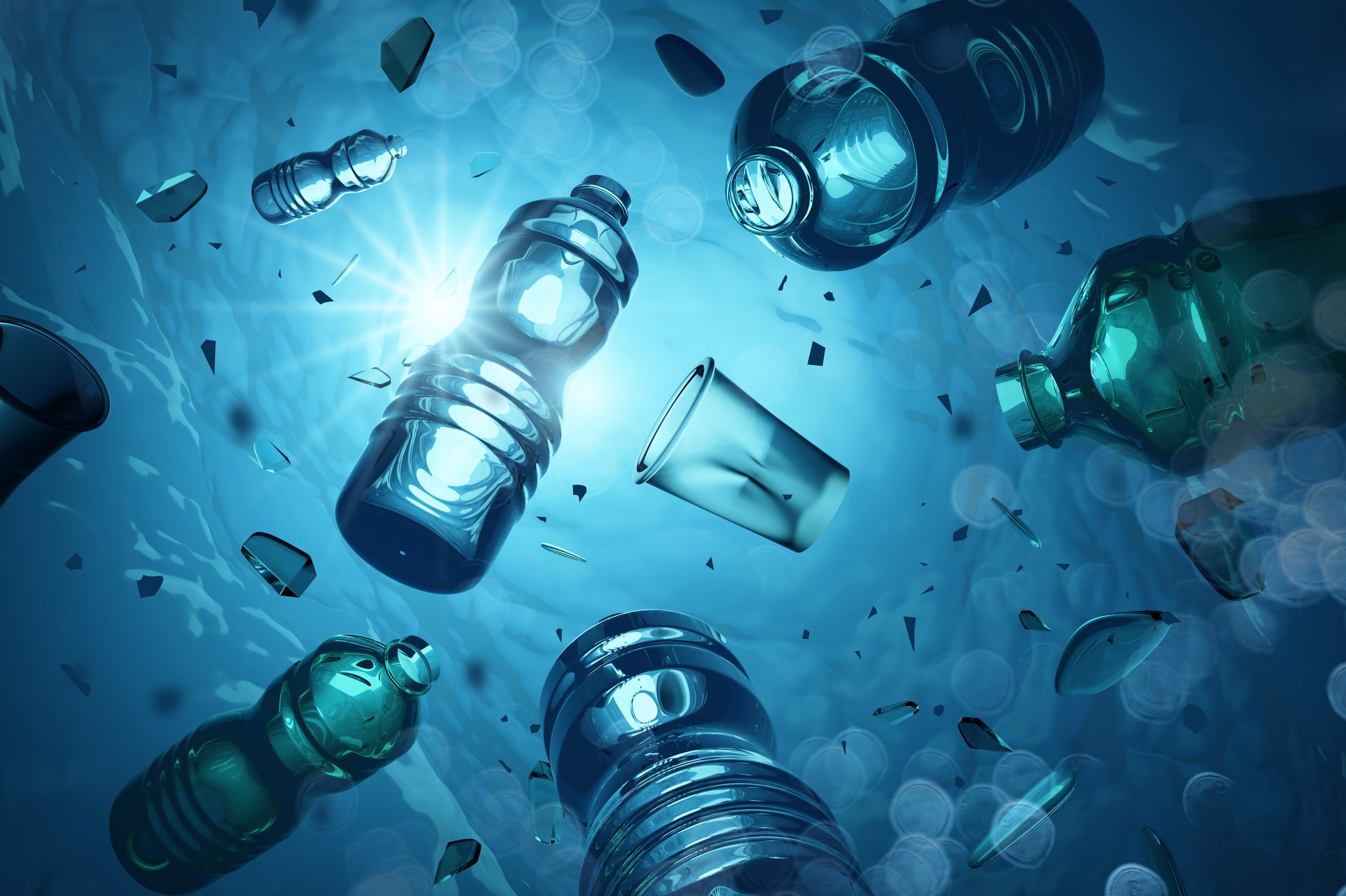Recycling myth-busters: Plastics
What’s the story with plastic and recycling?
By Matt Grondin
IF YOU’RE CONSCIENTIOUS about shrinking your waste footprint, you’ve probably tried to reduce—or even cut out—your plastic use. Plastics have been in the news more and more over the years—and that’s because there’s been more and more plastic around us, from the Great Pacific Garbage Patch in the Pacific Ocean to microplastics in waterways, food supplies and ... well ... everywhere.
There’s no question that plastic use has skyrocketed in recent decades. Most people agree that we need to reduce our use of plastics, especially single-use plastics. Maine leads the country with some encouraging new legislation aimed at reducing nonrecyclable, single-use packaging, and we already have bans on plastic bags and Styrofoam.
But what’s the story with plastic and recycling? It seems as if there’s a different way of doing it everywhere you look. And that’s true in one way, because depending on where you live and where your plastic recycling goes, the result may vary: the plastics discarded by your cousin in San Francisco may be processed differently than the ones tossed by your mother-in-law in North Carolina.
Let’s examine some general myths
I heard only about 5% of plastics are ever recycled—the rest just goes to landfills.
This is a misleading statistic. Hard plastic containers with a #1–#7 recycling symbol on them are consistently recycled into new things, from bottles and jugs to textiles and playground equipment. These kinds of plastics are in high demand by manufacturers who want to fulfill their corporate social responsibility goals of using recycled resins to meet their production needs. In the United States, the amount of these plastic containers that are recycled is in the 30% range, or three million tons annually. We can and should do better to recover more of them.
There are, however, lots of other plastics that are not designed to be recycled and aren’t recoverable, such as computer keyboards and monitors, toilet seats, pen caps and so on. Ideally, companies would factor recyclability and sustainability into the design process. Maine’s extended producer responsibility legislation for packaging materials can help push some items from nonrecyclable to more readily recyclable through “eco-modulated fees,” meaning giving manufacturers a financial incentive to reduce packaging altogether or put their products into readily recyclable packaging. That’s now in the rulemaking phase, with an expected rollout in stores around 2026.
My town only recycles #1 or #2 plastics, but nothing else. Does that mean there’s no way to recycle #3–#7?
That’s certainly true in some towns, and it’s true that #3–#7 aren’t as profitable as #1 or #2, so some places don’t tackle them.
But there are markets in North America for those other plastics, and they make some nifty things from them, from ductwork for cars’ HVAC systems, to drainage pipes to plastic grids used underneath a new patio or driveway, like HEXpave or Gravalock. So, there’s a market for #3–#7 plastics, but it takes dedication by individuals to participate in programs that accept #3–#7s, and strong commitment by municipalities, recycling facilities and manufacturers to keep these recoverable resources out of landfills.
Plastic bags and Styrofoam have the recycling symbol on them, so they’re recyclable…right?
Yes and no. They are not recyclable in your curbside bin or at the local transfer station.
Plastic bags and films should be brought back to retail stores to be recycled. Many grocery and hardware stores have a bin right at the front where certain plastic films can be placed to be shipped off and turned into composite lumber, such as TREX™. It’s important that the right kinds of films go into those bins and that all materials be clean. Some examples of acceptable plastic bags and wraps are shopping bags, dry cleaning bags, bread bags and bubble wrap. To learn more about the kinds of bags and films that can be recycled and to find your closest drop-off location, visit bagandfilmrecycling.org.
As for Styrofoam … it’s technically recyclable. But here’s the catch: foams are so light and bulky that the environmental and economic costs of transporting them make recycling a tough proposition. So, while we search for better solutions for foams, we can look to the EPA’s solid waste hierarchy in the meantime: the 3 Rs. (Plus a few more steps!) Can we reduce, reuse, or recycle it? As we know, that last one is a big challenge. Styrofoam can’t compost, so we’re left with waste-to-energy usage or landfilling it. Since waste-to-energy is above landfilling on the solid waste hierarchy, that’s the best call in this instance. As Styrofoam’s disposability options are so low on the hierarchy, Maine’s ban on many kinds of foam is particularly important—it removes more of this hard-to-manage material from the waste stream entirely.
And following that solid waste hierarchy is really the best practice for all our solid waste: reducing and reusing materials before they even enter the waste stream can help forestall tricky conversations and questions about recycling vs. compost vs. trash. In the end, a little education and mindfulness about our waste will go a long way toward achieving greater sustainability.
This article appeared in the Spring 2023 edition of Green & Healthy Maine HOMES. Subscribe today!
Find Maine experts that specialize in healthy, efficient homes in the Green Homes Business Directory.



